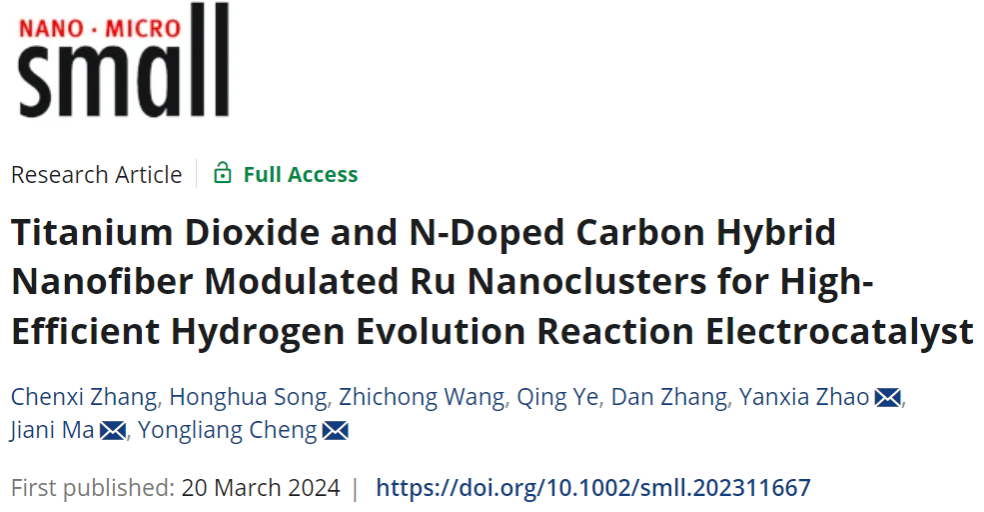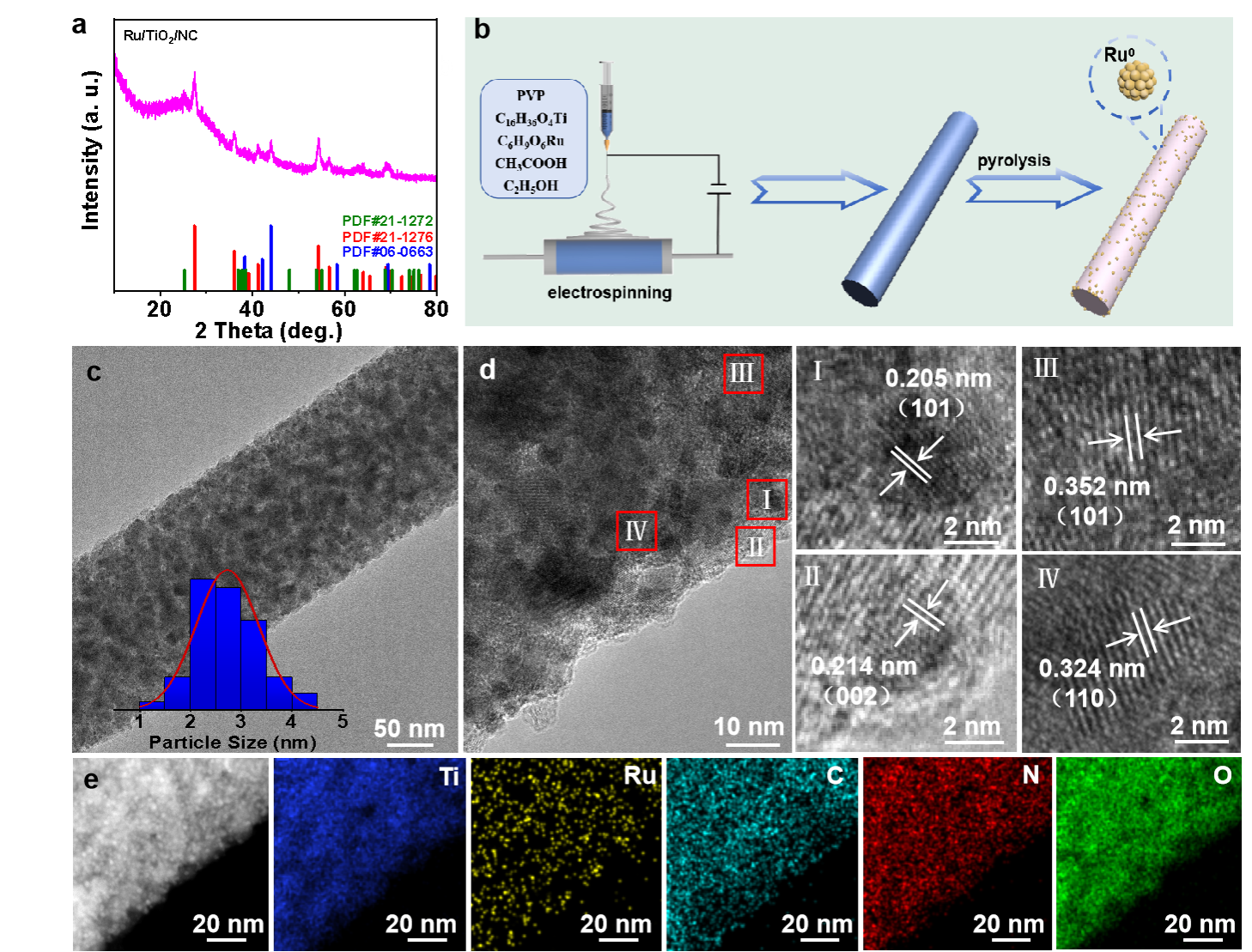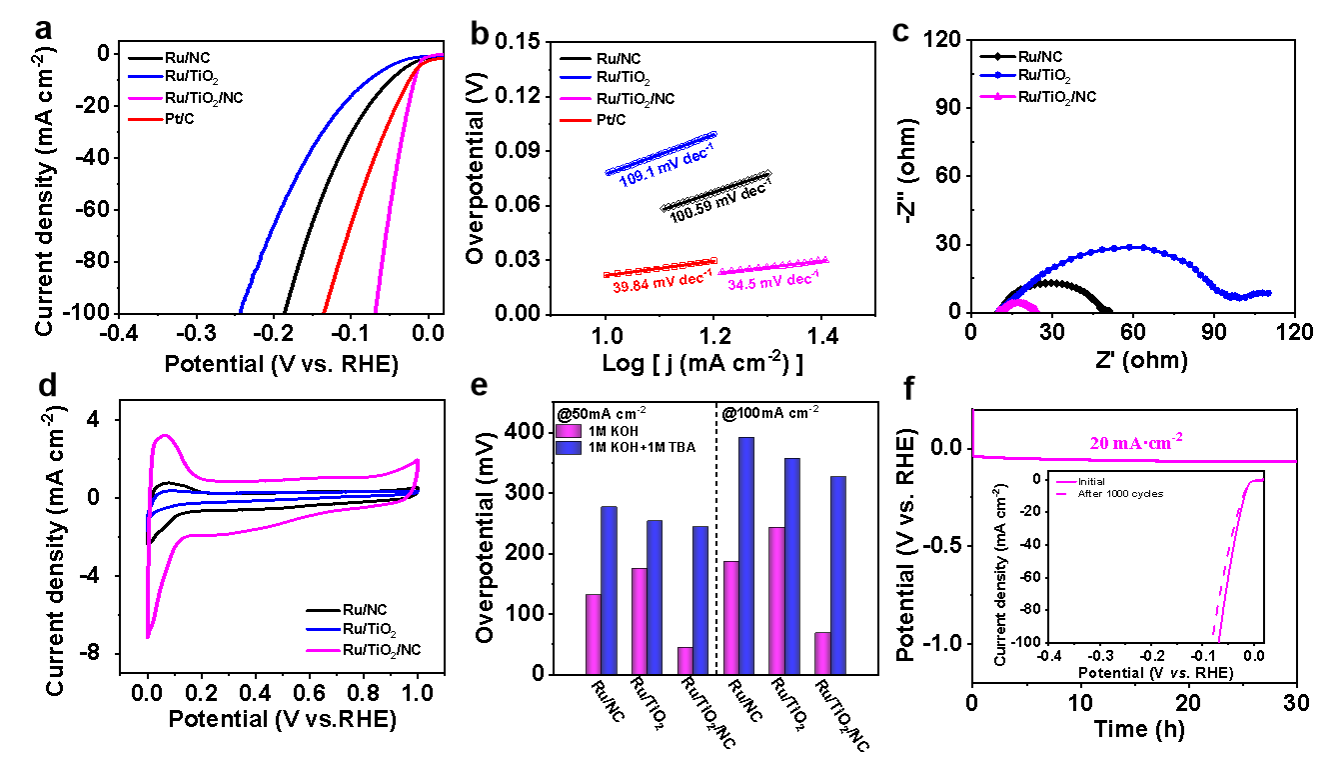
Chenxi Zhang, Honghua Song, Zhichong Wang, Qing Ye, Dan Zhang, Yanxia Zhao*, Jiani Ma*, and Yongliang Cheng*. Small, 2024, 2311667. DOI: 10.1002/smll.202311667.

The sluggish kinetics and complex reaction pathway associated with water dissociation during the alkaline hydrogen evolution reaction (HER) result in high energy barriers and low efficiency of energy utilization, which is not conductive to the application of alkaline water splitting. To address the above problems, highly active HER electrocatalysts are usually required to speed reaction kinetics and minimize energy consumption. By virtue of its relatively low price with respect to Pt, Ru has been recognized as an appealing alternative for Pt based HER electrocatalyst. However, the HER activity of this catalyst, particularly in an alkaline solution, remains inadequate as a result of the formidable metal–hydrogen bonding and sluggish kinetics of water dissociation. To address these challenges effectively, one of the efficacious approaches is to fabricate heterostructures through designing appropriate supports. The ideal electrocatalyst support should not only regulate the local electronic environment of Ru to expedite water dissociation and optimize *H adsorption but also possess excellent electronic conductivity to enhance electron transport.

Figure 1. Ru/TiO2/NC (a) XRD patterns, (b) schematic illustration for the fabrication, (c) TEM image, (d) HRTEM images, (e) HAADF-STEM image and corresponding EDS mapping.
In such a context, Ru/TiO2/N-doped carbon (Ru/TiO2/NC) nanofiber was constructed as highly efficient HER electrocatalyst through electrospinning and subsequent pyrolysis treatment. A series of physiochemical characterizations including tests on hydrogen binding energy, experiments on hydrogen radical quenching and theoretical calculations reveal that TiO2/NC nanofiber as a support material can more effectively promote water dissociation as well as optimize the adsorption of *H compared to NC and TiO2, thus leading to significantly improved HER activity of Ru. The optimal Ru/TiO2/NC nanofiber in 1 M KOH only demands an overpotential of 18 mV to achieve 10 mA cm−2, outperforming Ru/NC nanofiber, Ru/TiO2 nanofiber and commercial Pt/C. The present work highlights the crucial role played by hybrid supports in enhancing HER activity, and this strategy can be extended to fabricate other types of supports for various electrocatalytic applications.

Figure 2. HER performance of the Ru/TiO2/NC nanofiber and contrast samples in 1.0 M KOH. a) LSV plots, (b) Tafel plots, (c)EIS plots, (d) CV plots (e) the overpotentials at 50 and 100 mA cm−2 with and without 1.0 m TBA, (f) chronopotentiometry plots.
First Author: Zhang Chenxi, master’s candidate, Northwest University
Correspondence Authors: Prof. Zhao Yanxia, Northwest University; Prof. Ma Jiani, Shaanxi Normal University; Prof. Cheng Yongliang, Northwest University
Full Text Link: https://doi.org/10.1002/smll.202311667
 Latest Updates
Latest Updates






